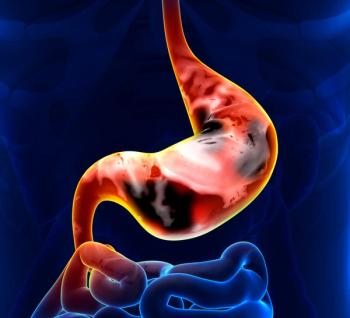
Atezolizumab Plus Bevacizumab Induces Promising Clinical Responses in Neuroendocrine Tumors
Patients with pancreatic and extrapancreatic neuroendocrine tumors treated with atezolizumab plus bevacizumab experienced consistent clinical responses and a progression-free survival consistent with other therapies.
The use of atezolizumab (Tecentriq) and bevacizumab (Avastin) yielded promising clinical responses and progression-free survival (PFS) in patients with neuroendocrine tumors (NET), according to findings from a non-randomized phase 2 trial (NCT03074513) published in JAMA Oncology.
In a population of 40 patients total, an objective response of 20% (95% CI, 5.7%-43.7%) was observed in patients with pancreatic NETs (pNETs) and 15% (95% CI, 3.2%-37.9%) in those with extrapancreatic NETs (epNETS). For the pNET group, the median PFS was 14.9 months (95% CI, 4.4-32.0) and 14.2 months (95% CI, 10.2-19.6) in the epNET group. Moreover, the median overall survival (OS) was 30.1 months (95% CI, 17.7–not reached) in the pNETs group and was not reached in the epNETs group.
“Our data suggest that the combination of bevacizumab and atezolizumab is associated with tumor regression in select patients with NETs, without new or concerning safety signals. Furthermore, our data suggest that PD-L1 expression in greater than 1% of tumor cells by immunohistochemistry may be associated with efficacy,” investigators of the study wrote.
A total of 20 patients with pNETs and 20 with epNETs were enrolled on the trial between March 2017 and February 2019, with a data cutoff being June 15, 2021. The median number of cycles given in the pNETs group was 17.0 and 12.5 for the epNETs group. A total of 6 patients with epNETs and 12 with pNETs died at a median follow-up of 43.8 months (95% CI, 39.0-46.1).
Patients were given 15 mg/kg of bevacizumab and 1200 mg of atezolizumab intravenously on day 1 of each 21 days cycle until disease progression, consent withdrawal, adverse effects, or unacceptable conditions hindering further therapy.
Eligibility criteria included having measurable disease, an ECOG performance status of 0 or 1, and an absolute neutrophil count of 1.5 x 109/L or more. Other criteria included having a lymphocyte count of 0.5 x 109/L or more, a platelet count of 100 x 109/L without a transfusion, a white blood cell count of 25000/ul or more, and hemoglobin of 90 g/L or more, all within 14 days of beginning study treatment.
Exclusion criteria included having treatment within 28 days prior to initiation, treatment with an investigational therapy within 28 days, and having a history of severe allergic reactions to chimeric or humanized antibodies. Additional criteria included an active history of autoimmune disease or deficiency, prior allogeneic stem cell or solid organ transplant, and history of idiopathic pulmonary fibrosis; organizing pneumonia; drug-induced pneumonitis; or idiopathic pneumonitis.
The primary end point was the objective response rate, identified as a complete or partial response on 2 consecutive occasions 4 weeks apart. The secondary end points included objective response, PFS, duration of response, and OS.
The median duration of response was 27 months among the 7 patients who responded. Investigators did not identify any new additional safety signals. Common adverse effects included hypertension, proteinuria, and fatigue. Discontinuation of therapy occurred in 5% of patients because of gastrointestinal hemorrhage and pain.
A PD-L1 expression greater than 1% was observed in 25% (95% CI, 9%-49%) of patients with pNETs and 0% with epNETs. Of 5 patients, 80% (95% CI, 28%-99%) had an objective radiographic tumor response.
“In this nonrandomized clinical trial, findings suggest that the combination of atezolizumab and bevacizumab is the first regimen to demonstrate a clinical response profile potentially associated with the immune milieu of well-differentiated NETs, as well as a promising PFS overall,” the investigators concluded.
Reference
Halperin DM, Liu S, Dasari A, et al. Assessment of clinical response following atezolizumab and bevacizumab treatment in patients with neuroendocrine tumors: a nonrandomized clinical trial. JAMA Oncol. 2022;8(6):904-909. doi:10.1001/jamaoncol.2022.0212
Newsletter
Stay up to date on recent advances in the multidisciplinary approach to cancer.


















































































